
Endurance Innovation
Andrew Buckrell and Michael Liberzon
The world of endurance sport is ever changing: equipment, training techniques, nutrition and lifestyle advice. Every week, Andrew and Michael will discuss one novel component in the endurance ecosystem, or we will speak with an innovator in our field and let them tell their story.
- 48 minutes 38 secondsSupersapiens CGM, iPhone 14 Sat, Noses
- 2:30 we are testing the Supersapiens CGM
- 4:45 what is Supersapiens and what are continuous blood glucose monitors
- 6:45 installing the CGM sensor
- 9:30 the Supersapiens ecosystem
- 16:30 the control system of blood glucose
- 18:45 Actionable learnings in ‘flattening the curve’
- Take a walk after a meal
- Apple cider vinegar??
- Food order
- Caffeine
- 23:00 use in training
- 29:30 use outside of training
- 30:45 the drawbacks
- Keeping the sensor mounted
- 35:00 iPhone 14 sat phone feature
- 41:30 a study on how cold weather impairs immune function of the human nose
17 December 2022, 11:00 pm - 1 hour 1 minuteJohn Buckley of Streamlines and Velosense
Endurance Innovation is now on Patreon! Have a peek at our page and show us some love.
- 1:45 meet John Buckley of Streamlines and Velosense
- 8:15 the birth and current state of the Streamlines Aeros aerometer
- 17:00 on aerometer accuracy and repeatability in outdoor testing
- 26:00 the Forma rider position sensor
- 34:15 on the individuality of helmets and head positions
- 37:30 on the pitfalls of displaying real-time CdA and the challenges involved in doing so
- 46:30 possible use cases of real-time CdA despite its handicaps
- 50:30 Streamilines data analysis
- 56:15 a brief discussion of the effect of tire temperature on rolling resistance
Keep up with Streamlines on their website. Follow Velosense on Instagram.
1 August 2022, 3:54 pm - 37 minutes 34 secondsCar AC, Garmin 955, Specialized TT Face Sock
Endurance Innovation is now on Patreon! Have a peek at our page and show us some love.
- 3:00 on when to open your car windows
- Average vehicle has a CdA of 0.6, so only ~11kW or 14hp used to overcome aerodynamic drag for the average car at 100kph
- Average vehicle AC units consume 1.5kW - 3.0kW (2 - 4hp). 1.5kW / 2hp costs the equivalent of adding 0.11CdA at 100kph
- The higher the speed, the greater the CdA hit of opening windows
- Not much hard Cd data on open windows vs closed windows, but a convertible vs a hardtop delta is
- 0.32 Cd for a hardtop and 0.36 Cd for a convertible
- 13:45 Michael’s first impression of the Garmin 955
- Solar feature is underwhelming
- Excellent optical sensor
- Still full of bugs
- Very good (seemingly) GPS tracks
- 25:30 Andrew remembers the Platysense Marlin
- 28:00 Speculating about the new Specialized TT helmet face sock
11 July 2022, 8:11 pm - 3:00 on when to open your car windows
- 39 minutes 18 secondsDiaa Nour is Back!
Endurance Innovation is now on Patreon! Have a peek at our page and show us some love.
- 2:00 the state of the bike industry
- 6:30 supply chain challenges
- 14:00 what the future holds for the bike industry and Ventum in particular?
- 17:15 on the supply of frames
- 19:30 the costs of protecting the brand
- 22:45 releasing bikes during the pandemic
- 28:40 where is the demand for bikes headed?
- 32:15 more humans on bikes and Ventum’s foray into e-bikes
Learn more about Ventum bikes and get your hands on one at the Ventum Racing website.
21 June 2022, 5:00 am - 50 minutes 2 secondsRunning Power Experts Hans van Dijk and Ron van Megen
Endurance Innovation is now on Patreon! Have a peek at our page and show us some love.
- 2:00 meet life-long runner and retired professor of engineering Hans van Dijk
- 5:00 meet (also a) lifelong runner and engineer Ron van Megen
- 9:00 where does all that work that we do as runners go?
- Overcoming running resistance (influenced by running efficiency)
- Overcoming aerodynamic drag
- Overcoming changes in elevation
- 11:30 running efficiency / energy cost of running (ECOR)
- Potentially large interindividual differences: up to 20%!
- Minimized through training
- 13:15 aerodynamic drag
- Average runner CdA is 0.24 in free air and 0.20 while drafting
- Eliud Kipchoge was down to 0.16 during his Breaking 2 attempt
- 18:15 changes in elevation
- Running efficiency improves when running uphill and worsens when running downhill
- 20:30 factors that influence running efficiency / ECOR
- Global, multi-year training load: more training tends to reduce ECOR
- Experiment with: cadene, arm carriage, shoes, etc., to find minimal ECOR
- Reduce weight
- 31:30 factors that affect aerodynamic drag
- Runner speed
- Drafting
- 34:00 Hans and Ron’s models of run performance
- 39:00 using the stryd power meter to calculate running efficiency
Learn more about Hans and Ron and browse their books at their website.
29 May 2022, 12:51 am - 18 minutes 18 secondsThird Anniversary Top Ten
- 1:00 #1 Episode 87 - Bruce Rogers on HRV Estimation of Aerobic Threshold
- 4:30 #2 Episode 103 - Kolie Moore on VO2max
- 5:50 #3 Episode 127 - Dan Bigham Returns
- 7:05 #4 Episode 110 - Marco Altini on Biofeedback
- 7:50 #5 Episode 120 - Adam Kerin on Chain Lubrication
- 10:00 #6 Episode 133 - Rebroadcast - Kolie Moore on VO2max
- 10:25 #7 Episode 113 - Mikael Eriksson on HR-Based Training
- 12:10 #8 Episode 114 - Cody Beals on Digging Deep
- 13:50 #9 Episode 116 - Andy Blow on Hydration and Nutrition
- 15:10 #10 Episode 119 - Sebastian Schluricke on Aero Testing
13 May 2022, 5:00 am - 48 minutes 41 secondsJP Ballard at IMWC St George
Endurance Innovation is now on Patreon! Have a peek at our page and show us some love.
- 3:15 what does one do with an aerometer a few days ahead of the biggest race in over two years?
- 7:45 how understanding wind patterns helps pro athletes make informed wheel selections
- 9:15 using wind data combined with the elevation profile and individual rider strengths to develop a power strategy
- 15:00 which Swiss Side-supported athletes are racing this weekend?
- 16:30 a sample of Swiss Side-developed hardware and their collaborations
- 19:15 Swiss Side cockpits
- 33:30 JP is deputized as the Endurance Innovation tech correspondent in StG
- Lionel’s curious choice of bike
- Giant’s new top secret bike
- BMC x Redbull Racing bike
- 44:30 JP’s picks for Saturday’s race
Learn more about Swiss Side on their website and follow JP Ballard on Instagram
6 May 2022, 5:00 am - 50 minutes 52 secondsJP Ballard of Swiss Side - Part 1
Endurance Innovation is now on Patreon! Have a peek at our page and show us some love.
- 2:15 the Swisside origin story and the overlap of motorsport and endurance sport
- 12:45 the state of cycling aerodynamics ten years ago
- 13:45 the challenges of getting cycling aero drag calculation right
- 19:30 the arrows in Swisside’s aero quiver
- Course simulation
- CFD
- Wind tunnel
- Pressure rake video
- Field testing
- 29:00 on identifying specific effects of aerodynamic interventions using the wake rake
- 32:45 elements on the bike / rider that are independent of upstream effects
- Front wheel
- Cockpit
- 35:30 Swiss Side’s field testing capabilities
- 39:00 the error-stacking effect holding back accurate field aerometers
- 45:00 making a smart-enough aerometer that recognizes artifacts and changes in conditions
- 49:15 ‘live CdA does not, and will not exist’
Learn more about Swiss Side on their website and follow them on Instagram
29 April 2022, 7:14 pm - 1 hour 19 minutesMaximilian Hoflich on Training Intensity and Testing
Endurance Innovation is now on Patreon! Have a peek at our page and show us some love.
148 Maximilian Hoflich
- 3:30 meet Maximillian Hoflich of Polite Coaching
- 6:15 the very basics of beginning an endurance training program
- 9:15 starting to think about eliciting specific metabolic responses during training
- 10:00 stimulus response model
- 10:45 the 3-zone model of intensity
- 12:30 a muscle fiber utilization model of training intensity (in a 3-zone model)
- Zone 1 - exclusively type 1 (slow twitch)
- Zone 2 - beginning to use type 2a (aerobic fast twitch) on top of type 1
- Zone 3 - heavy type 2a use as well as potentially some type 2x in very intensity bursts
- 18:30 the value of developing the aerobic system for endurance athletes
- 19:30 why bother controlling and monitoring training intensity?
- 21:45 defining ‘the‘magic’ zone 2
- 23:45 determining the top of zone 2 (VT1, LT1)
- First appearance of excess CO2 during a VO2 test using a metabolic cart
- First lactate rise observed during a lactate step test
- 32:45 goals for lactate values during ironman training
- 35:30 triggering an improvement in Z2 power
- High volume training
- Substrate availability can be used to enhance shorter bouts of Z2 training
- 37:30 using a combination of power and HR to gauge progress in Z2 training
- Using this metric to gauge training load during longer efforts - up to 80% of HRmax for Z2 work in fit individuals
- Confounding factors
- HR-limited Z2 validation testing
- 42:30 the role of RPE
- 44:30 training Z2 when training time is restricted
- SOME CHO restricted training may be useful, but care must be taken - especially for female athletes
- Using Z2 training during life-stressful situations
- 49:30 defining the second intensity threshold (VT2, LT2, MLSS, CP)
- It is possible to maintain work below this point for a relatively long period
- Combustion of CHO increases rapidly as athletes approach this threshold and more type 2a muscles are used
- These ‘thresholds’ are more of a range than a fine inflection point
- 56:15 determining MLSS
- All-out time trials >30 minutes
- Lactate minimum test following a max-effort ramp test
- 63:00 training to improve time to exhaustion at MLSS
- Sweet spot intervals at the lower edge of the estimate of MLSS
- Over-unders
- Some low cadence work
- ideally, stressing the type 2a fibers to improve their endurance
- 67:30 work above MLSS - aka VO2max or HIIT
- Improving VO2max ceiling
- Most effective workouts for accumulating time above 90% VO2max may be longer intervals such as fast starts
- Short HIIT intervals like 30-30s may be less useful for long-endurance athletes with limited anaerobic / glycolytic capacities
- 74:30 should we be doing training in the aero position or sitting up - especially during VO2max intervals
Follow Maximilian on Instagram and get in touch through his website.
22 April 2022, 5:00 am - 1 hour 12 minutesGiBLI Aerometer
Endurance Innovation is now on Patreon! Have a peek at our page and show us some love.
- 1:45 meet Mark and Ben of Gibli
- 7:15 the ‘why’ of starting Gibli
- 13:00 a description of the Gibli aerometer
- 18:30 a summary of aero testing variables and the challenges they present to accurately measuring aero drag
- How does Gibli measure / calculate changes in elevation
- How can Gibli accurately capture acceleration without a dedicated speed sensor
- 26:15 is the aerosensor designed more for dedicated testing or for everyday use?
- 33:15 the Gibli app and testing protocol
- 43:00 on offering guidance to improve aerodynamics for the average user
- 48:45 the challenges of adoption of new tech
- 51:00 other testing route considerations and limitations
- 57:45 how does Gibli handle rolling resistance and potential changes in CRR over the course of the day as temperatures change?
- 62:00 how accurate is the system?
Read more about Gibli on their website and follow them on Instagram.
15 April 2022, 5:00 am - 56 minutes 19 secondsWhich one Blows Harder?
Endurance Innovation is now on Patreon! Have a peek at our page and show us some love.
- 3:30 Cycling Tips review of fans
- Fan specs: volumetric flow rate, airflow velocity, power
- Measured skin temp, core temp, heat flux
- Used an array of Core body temp sensors
- Compared no fan, small desktop fan, low velocity air mover, wahoo headwind, scroll fan
- Heat transfer equation: Q=k*A*ΔT, where Q is the heat transfer, k is the heat transfer coefficient, A is the surface area, and ΔT is the difference between skin temperature and the air around the skin
- Maximize all three variable to maximize heat transfer
- Perception of thermal comfort vs core temperature
- 39:30 how much does a flappy run top cost in terms of run power?
- Tight clothing improves wicking and cooling
- Based on a CdA of 1.0, at 4:00/km, aero drag is 40W
- Flappy kit may increase CdA by 20% or 8W
- Michael’s 4:00/km Stryd power is 340W, plus 40W for air resistance
- So floppy kit hit of 8W is an increase of ~2%
- @ a 5:00/km pace, the aero drag is too small to worry about.
Check out our episodes on heat transfer: 112, 115, 32, and the Core Body Temp Sensor page for their webinars and blog posts.
8 April 2022, 5:00 am - 3:30 Cycling Tips review of fans
- More Episodes? Get the App
Your feedback is valuable to us. Should you encounter any bugs, glitches, lack of functionality or other problems, please email us on [email protected] or join Moon.FM Telegram Group where you can talk directly to the dev team who are happy to answer any queries.
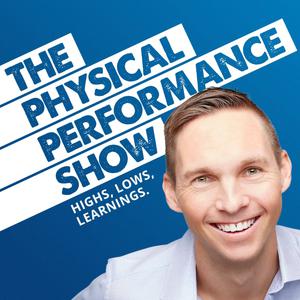 The Physical Performance Show
The Physical Performance Show
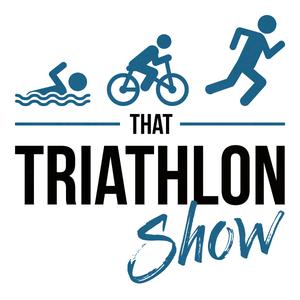 That Triathlon Show
That Triathlon Show
 Purple Patch Podcast
Purple Patch Podcast
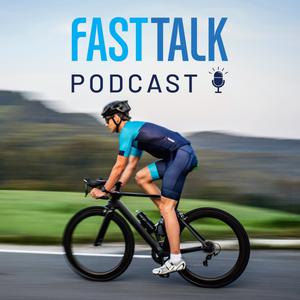 Fast Talk
Fast Talk
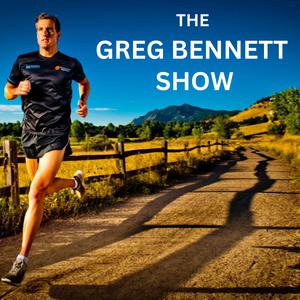 The Greg Bennett Show
The Greg Bennett Show
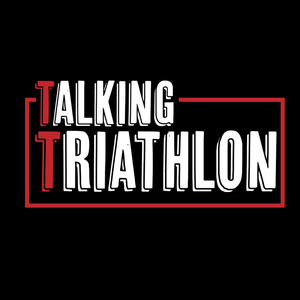 Talking Triathlon
Talking Triathlon